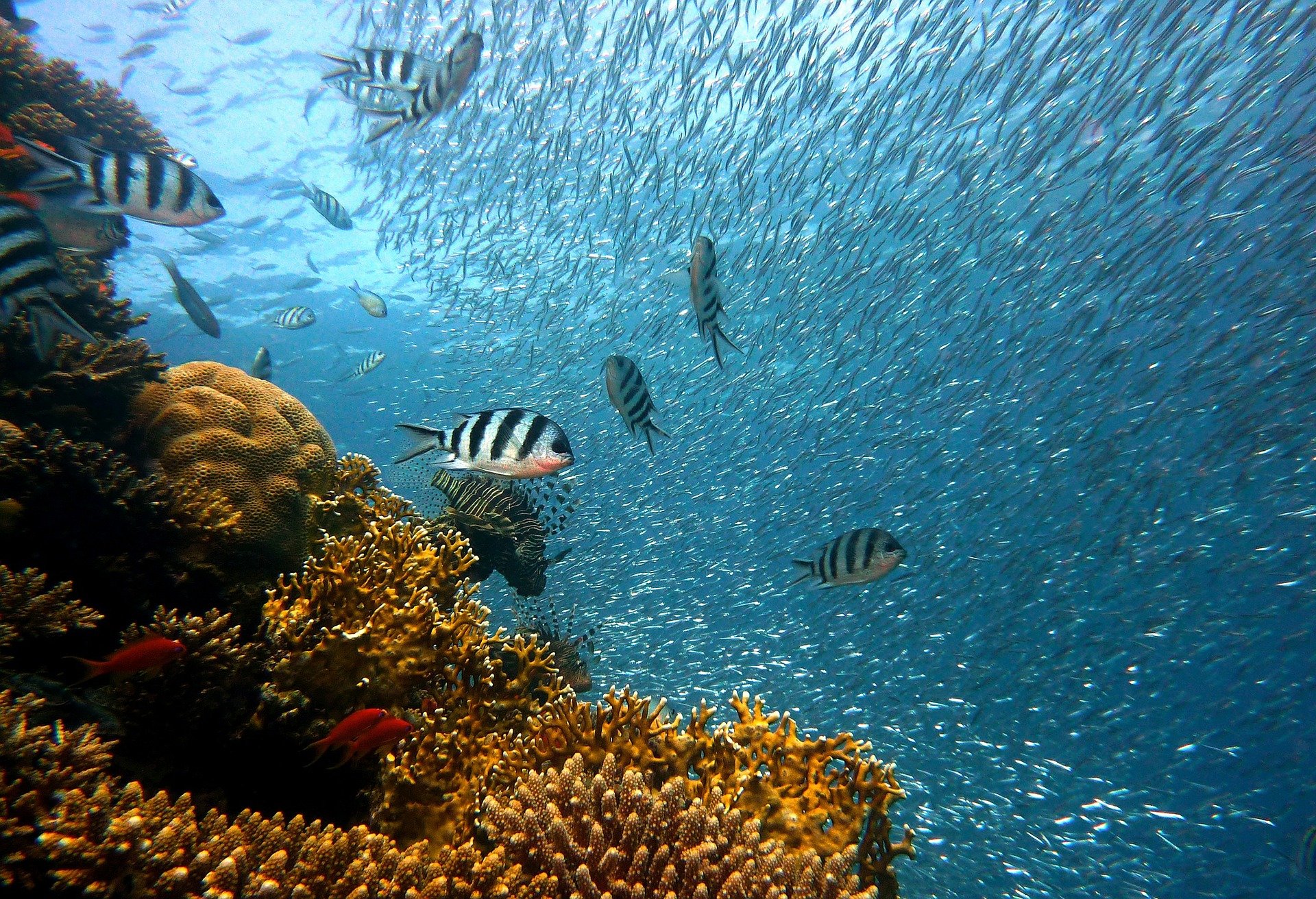Recent Discovery of “Pristine” Coral Reefs

Catherine Stone discusses the recent discovery of a “Pristine” Coral Reef off the coast of Tahiti.
Coral reefs are the most beautiful and fascinating parts of the ocean, attracting millions of visitors every year. French underwater photographer, Alexis Rosenfeld, described the sight of a newly discovered reef as a ‘work of art’, with ‘giant, beautiful rose corals stretching as far as the eye can see’.
A mission led by UNESCO has found a ‘pristine’ 3km coral reef at 30m depths off the coast of Tahiti in French Polynesia in November. This is the largest ever found at these depths, in what is known as the ‘twilight zone’. As a leading marine scientist Professor Murray Roberts emphasized, the discovery of this reef showed the limits of scientific knowledge – questioning assumptions about the habitats and numbers of reefs.
The discovery was part of a global seabed-mapping mission called the Seabed2030 project that ambitiously aims to map the entire ocean floor by 2030, part of the UN Decade of Ocean Science for Sustainable Development. Thanks to massive advancements in technology that allow large scale scanning, projects like Seabed2020 and greater funding, discoveries like the Tahiti reef can highlight gaps in science understanding on intricate oceanic processes and facilitate ideas for preserving species and regulating the climate.
For centuries the seabed has been a vast mystery, only explored in pockets and with great difficulty. It is an often-stated fact that humanity knows more about the surface of the moon than the depths of the sea, contributed to by the fact that we spend billions more on space exploration than ocean exploration every year.
Coral reefs function as largely self-contained ecosystems of dense biodiversity and biological productivity; an estimated 25 per cent of marine species can be found in coral reefs, despite only covering 0.2 per cent of the seafloor. Reefs are sometimes referred to as the ‘rainforests of the sea’ for their biodiversity and importance in the regulation of oceanic health. By mapping these reef ecosystems, we can protect them from intense human activities with strategically placed marine protection areas to help more reefs function at their full potential.
Because of their interconnected nature, coral reefs are especially vulnerable to pollution, rising sea temperatures and acidification caused by carbon-dioxide emissions dissolving in the water. The oceans absorb heat very efficiently and have stored a cumulative amount of excess heat trapped in the atmosphere by human-generated greenhouse gases.
Warming waters cause coral bleaching, as the algae that give coral their colour and nutrients (zooxanthellae) are expelled at a temperature of roughly 30 degrees, which ends their symbiotic relationship. Coral bleaching has been observed in the East Pacific since the early 1980s, but the increased frequency and severity of recent years has raised the profile of this issue to crisis level in the marine scientific community. Between 2009 and 2018, 70 per cent of the world’s corals were affected by bleaching events and 14 per cent were killed, according to a 2020 report by the Global Coral Reef Monitoring Project. Other threats include increased acidity, ultraviolet radiation exposure, agricultural and industrial runoff, drying from low-tide events, decreasing oceanic salinity, sedimentation from terrestrial erosion, pollution, and disease.
Between 2009 and 2018, 70 per cent of the world’s corals were affected by bleaching events and 14 per cent were killed, according to a 2020 report by Global Coral Reef Monitoring Project
By studying how the newly discovered Tahiti reef functions at the depth of 30m and how it has sustained no damage from climate pressures, scientists hope to understand how deeper reefs can act as a refuge in the future as the shallower water warms faster, with processes of zooxanthellae migration to greater depths already observed.
Analysis of ancient coral structures has shown corals have adapted numerous times to global temperature change during the 400 million years of their existence. However, evidence from major coral reefs extinctions in the geologic past show evidence that reef revival from destruction may take tens of thousands of years. Scientists have been studying evidence that corals have been evolving more rapidly in the past two decades in the hopes of creating genetically modified corals with increased heat resistance.
Analysis of ancient coral structures has shown corals have adapted numerous times to global temperature change during the 400 million times of their existence
The Elizabeth Moore International Center for Coral Reef Research and Restoration breed corals by hand and reattaches them. They have so far regrown over 70,000 corals from five different species for reattachment to damaged areas.
Erin Muller, Science Director of Elizabeth Moore, argues coral protection measures such as this are only palliative measures keeping reefs from ‘functional extinction’. The only way to securely protect these dynamic areas of life is by mitigating climate change. Exponential growth in greenhouse gases emissions will exceed the heat-storing capacity of the oceans and set in motion irreversible chains of damage.


